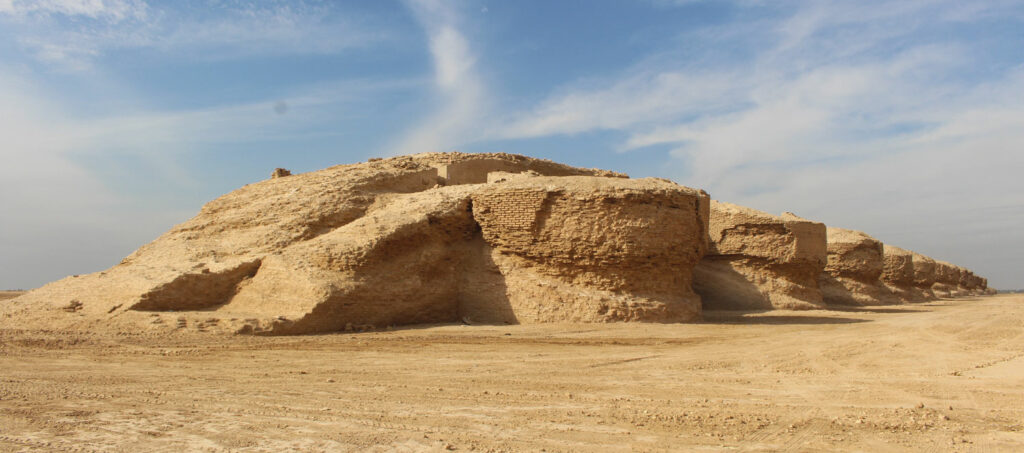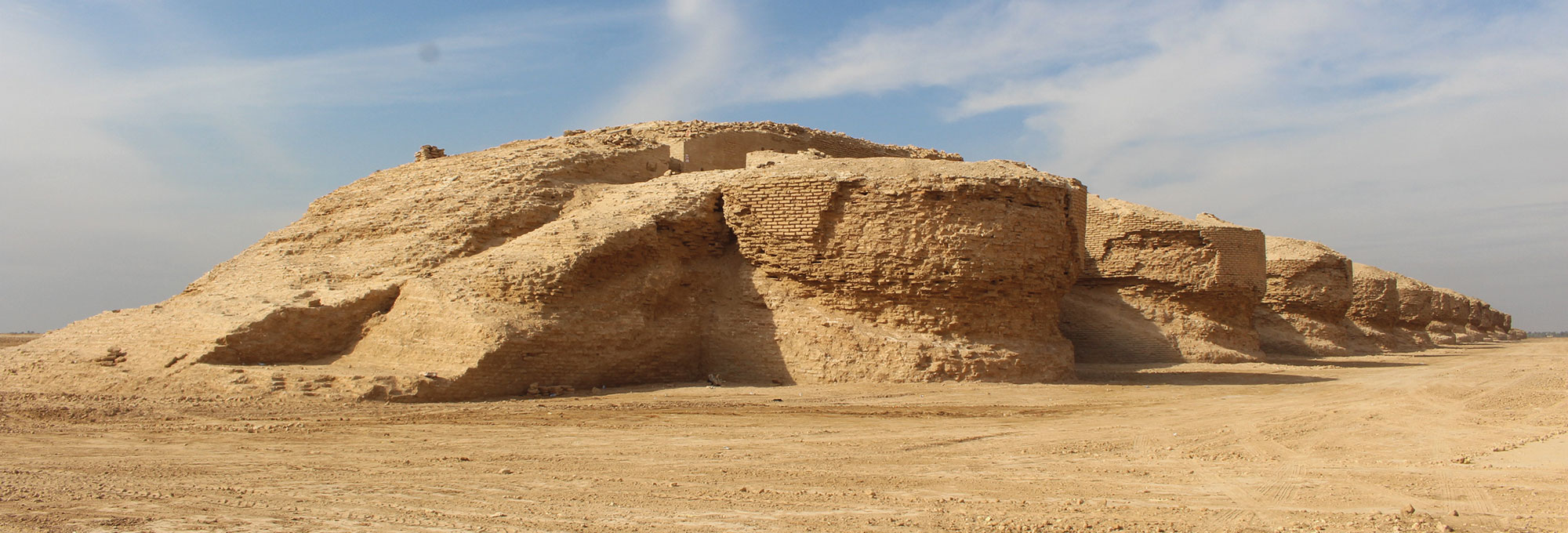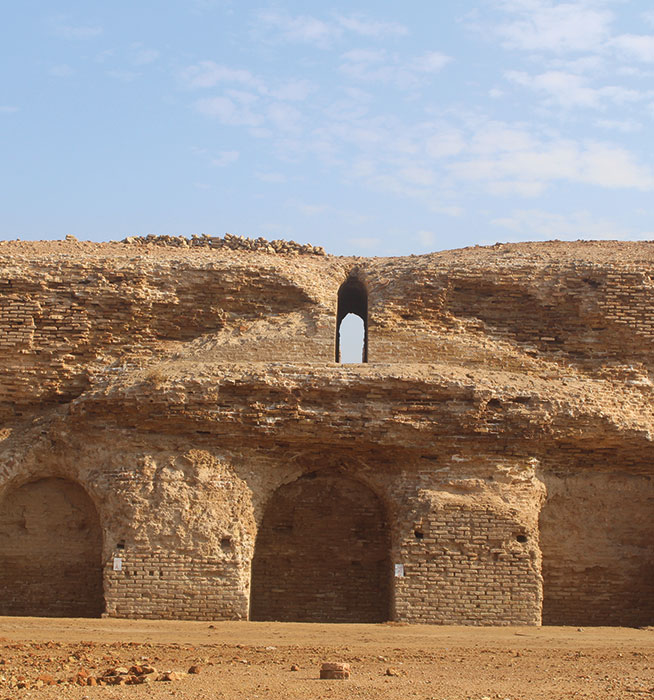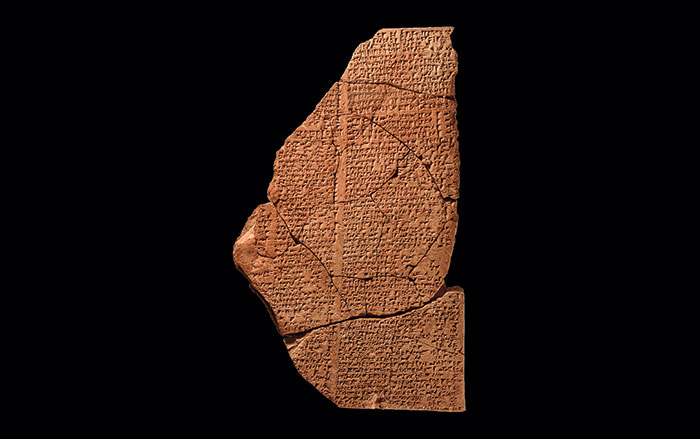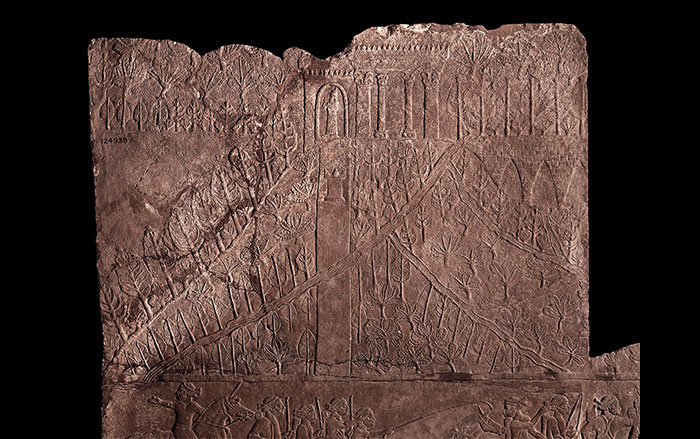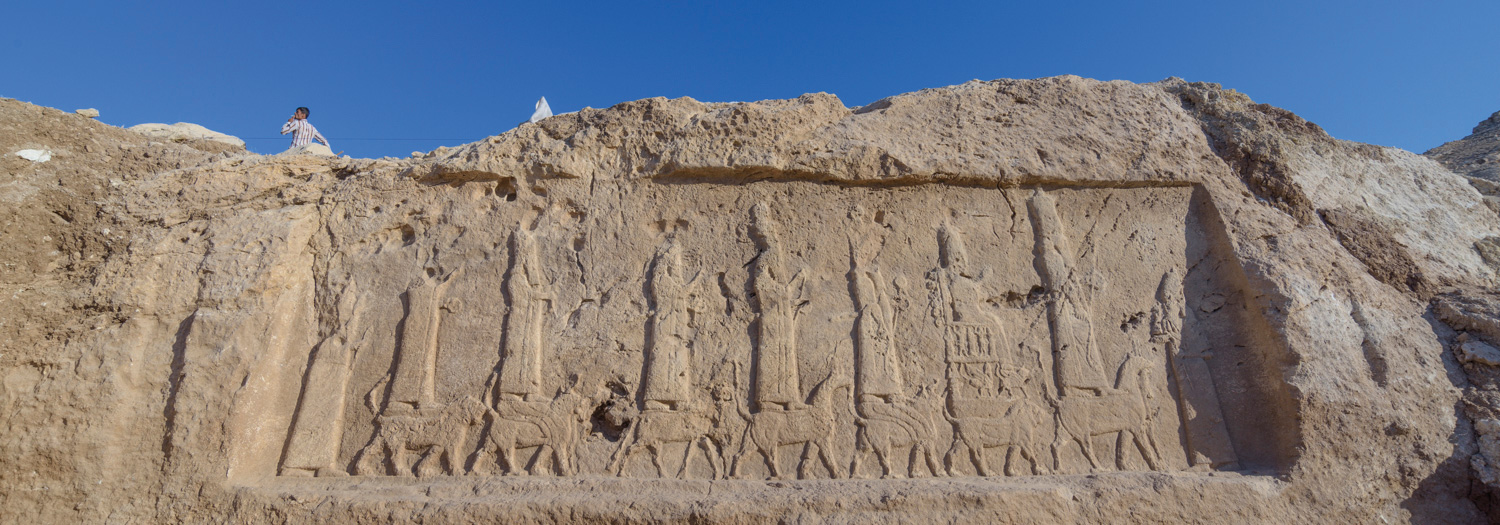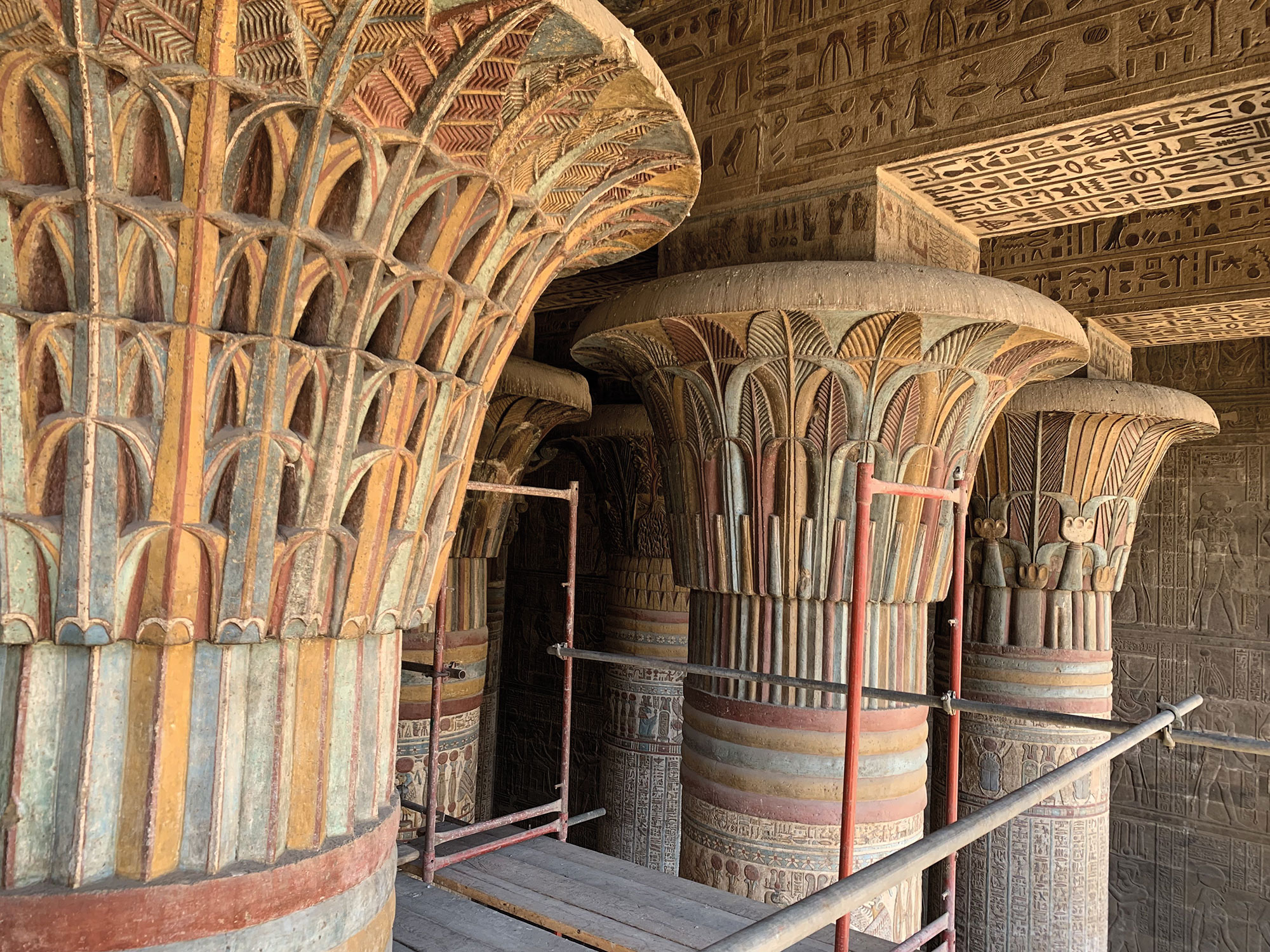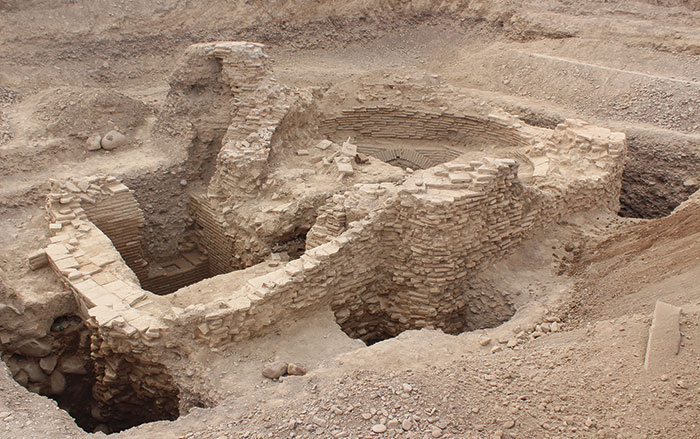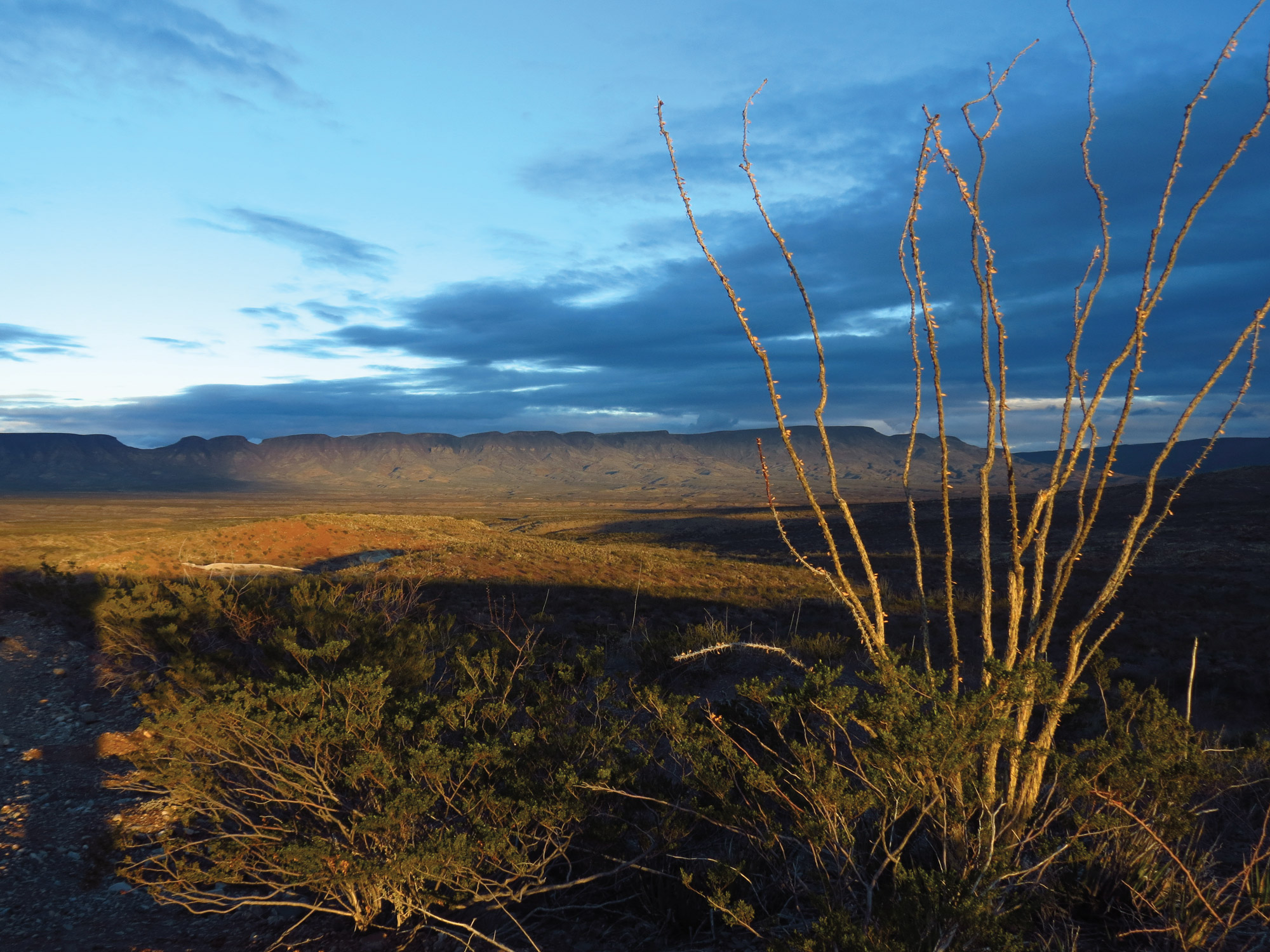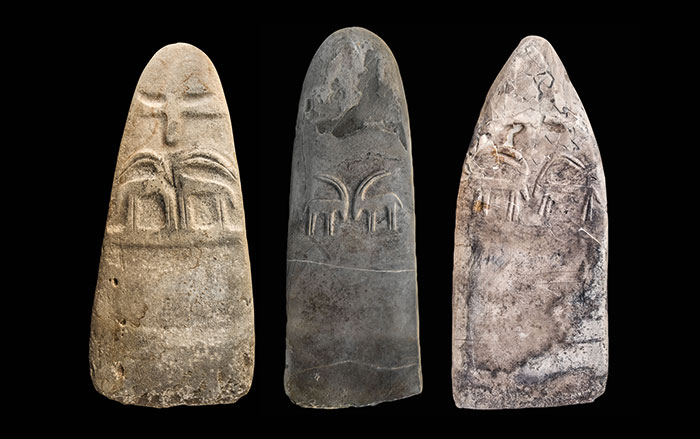Some 50 miles northwest of Baghdad, archaeologists and a large team of local workers have revealed the standing remains of a neglected Sasanian-era (a.d. 224–651) site known as the Zindan, a Persian word for prison. In the tenth century a.d., Arab geographer and traveler Ahmad ibn Rustah reported that, according to local folklore, the imposing brick structure once held 7,000 prisoners of the Sasanians, an Iranian dynasty that controlled much of the Near East. In the nineteenth century, archaeologists visited the site, then mostly covered with earth, and suggested that it was actually part of a royal palace complex.
Since 2021, archaeologist Ahmed Abdul Jabbar of the Iraqi State Board of Antiquities and Heritage has led a team that has thus far removed some 17,000 tons of soil and rubble from the Zindan. They have discovered that the structure, which is a third of a mile long and rises as high as five stories, had 16 towers and was studded with defensive features such as arrow slits that suggest it was a fortress. Artifacts recovered from the site, including arrowheads, support the idea that soldiers patrolled the towers. Jabbar notes that the royal Sasanian city of Dastagird lies some three miles to the north and that the Zindan likely served as one of its defensive linchpins. His team has also unearthed evidence that the Zindan was heavily damaged, very likely when the Byzantine emperor Heraclius (reigned a.d. 610–641) invaded the Sasanian heartland in a.d. 628 and sacked Dastagird during a conflict known to modern scholars as the Last Great War of Antiquity.
